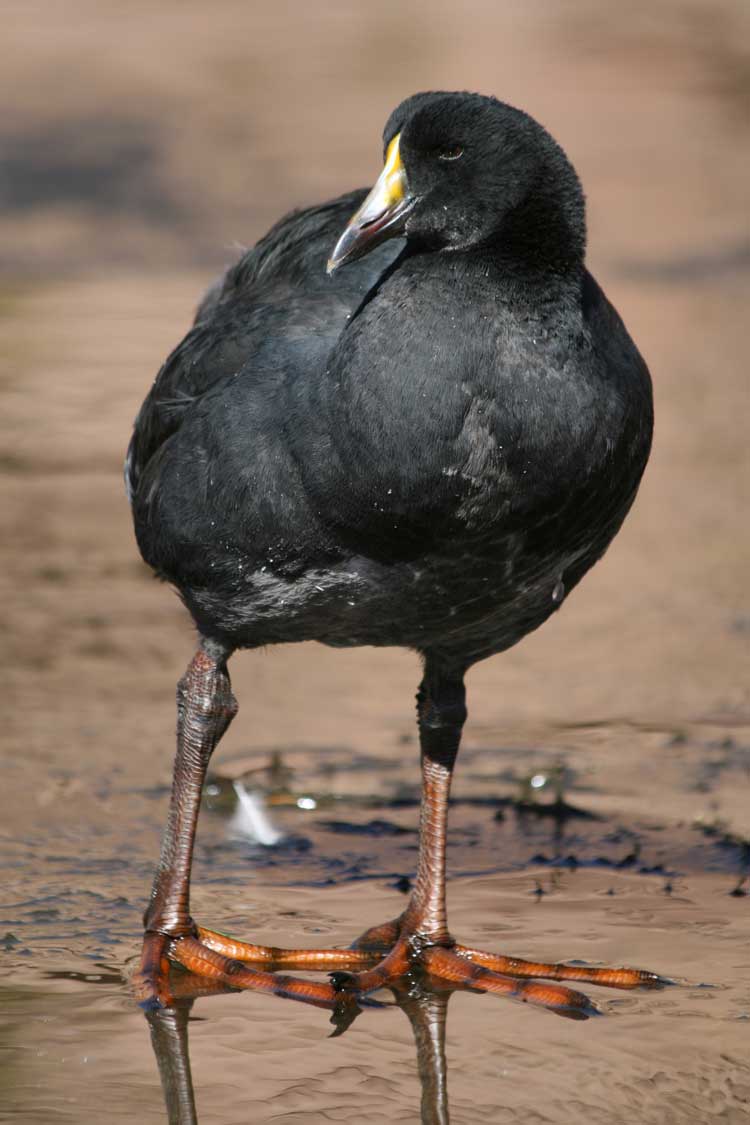
Fulica gigantea (*)
Superregnum: Eukaryota
Cladus: Unikonta
Cladus: Opisthokonta
Cladus: Holozoa
Regnum: Animalia
Subregnum: Eumetazoa
Cladus: Bilateria
Cladus: Nephrozoa
Superphylum: Deuterostomia
Phylum: Chordata
Subphylum: Vertebrata
Infraphylum: Gnathostomata
Megaclassis: Osteichthyes
Cladus: Sarcopterygii
Cladus: Rhipidistia
Cladus: Tetrapodomorpha
Cladus: Eotetrapodiformes
Cladus: Elpistostegalia
Superclassis: Tetrapoda
Cladus: Reptiliomorpha
Cladus: Amniota
Classis: Reptilia
Cladus: Eureptilia
Cladus: Romeriida
Subclassis: Diapsida
Cladus: Sauria
Infraclassis: Archosauromorpha
Cladus: Crurotarsi
Divisio: Archosauria
Cladus: Avemetatarsalia
Cladus: Ornithodira
Subtaxon: Dinosauromorpha
Cladus: Dinosauriformes
Cladus: Dracohors
Cladus: Dinosauria
Ordo: Saurischia
Cladus: Eusaurischia
Subordo: Theropoda
Cladus: Neotheropoda
Cladus: Averostra
Cladus: Tetanurae
Cladus: Avetheropoda
Cladus: Coelurosauria
Cladus: Tyrannoraptora
Cladus: Maniraptoromorpha
Cladus: Maniraptoriformes
Cladus: Maniraptora
Cladus: Pennaraptora
Cladus: Paraves
Cladus: Eumaniraptora
Cladus: Avialae
Infraclassis: Aves
Cladus: Euavialae
Cladus: Avebrevicauda
Cladus: Pygostylia
Cladus: Ornithothoraces
Cladus: Ornithuromorpha
Cladus: Carinatae
Parvclassis: Neornithes
Cohors: Neognathae
Cladus: Neoaves
Ordo: Gruiformes
Familia: Rallidae
Genus: Fulica
Species Fulica gigantea
Name
Fulica gigantea Eydoux & Souleyet, 1841
References
Voy.LaBoniteZool. 1 p.102,Atlas Ois. pl.8
Vernacular names
English: Giant Coot
suomi: Punannokikana
français: Foulque géante
magyar: Óriásszárcsa
The giant coot (Fulica gigantea) is a species of coot from South America. It is found at lakes in the altiplano from central Peru, through western Bolivia, to north-eastern Chile and extreme north-western Argentina.
Description
With a total length of 48–64 cm (19–25 in),[2] it is the second largest extant member of the family Rallidae, after the takahe from New Zealand, and adults are considered functionally flightless.[3] It is the only coot with reddish legs.[2] It has a small white frontal shield. Its beak is tipped black. An adult male weighed 2.7 kg (6.0 lb) while three adult females weighed 2.03–2.4 kg (4.5–5.3 lb).[4]
Breeding
As in the related horned coot, the giant coot is monogamous and the pair builds a huge nest in a highland lake. However, unlike the horned coot, the nest of the giant coot is primarily made of aquatic vegetation and – as it is fiercely territorial – it never forms colonies.[3]
References
BirdLife International (2016). "Fulica gigantea". IUCN Red List of Threatened Species. 2016: e.T22692943A93375413. doi:10.2305/IUCN.UK.2016-3.RLTS.T22692943A93375413.en. Retrieved 13 November 2021.
Jaramillo, A. Burke, P., & Beadle, D. (2003). Birds of Chile. Christopher Helm. ISBN 0-7136-4688-8
Taylor, P. B. (1996). Giant Coot (Fulica gigantea). pp. 209 in: del Hoyo, J., Elliott, A. & Sargatal, J. eds. (1996). Handbook of the Birds of the World. Vol. 3. Hoatzins to Auks. Lynx Edicions, Barcelona. ISBN 84-87334-20-2
Taylor, Barry, Rails: A Guide to the Rails, Crakes, Gallinules and Coots of the World. Yale University Press (1998), ISBN 978-0-300-07758-2.
Retrieved from "http://en.wikipedia.org/"
All text is available under the terms of the GNU Free Documentation License

